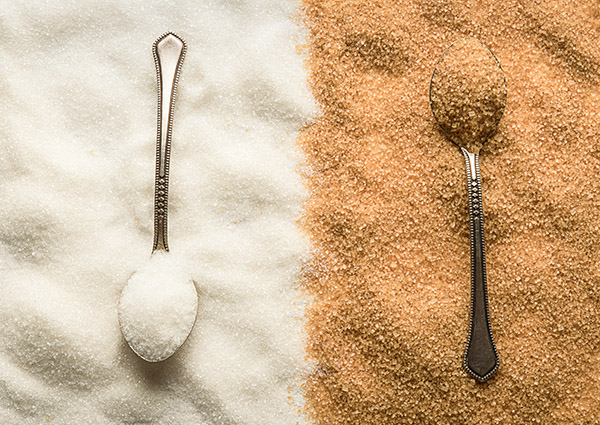
Refined Sugars vs. Unrefined Sugars: What’s the Difference?
Sugar is the bad guy we just can’t resist! But everyone knows we eat far too much of the stuff, which is why “healthier” sugar options sound so sweet.
Refined Sugars
Refined sugar is basic, white table sugar and includes powdered sugar, brown sugar and high-fructose corn syrup. The source of refined sugar is sugar beets or sugar cane plants refined to remove the surrounding plant parts and impurities.
Unrefined Sugars
Unrefined sugar doesn’t remove all that stuff, meaning you will get some minerals here and there. But you’d have to eat bowls of sugar to get enough nutrients to measure; not a good trade-off.
Unrefined sugars include pure maple syrup, coconut sugar and agave nectar. Although all different names, they affect our bodies in the same way. Sorry, honey is no exception!
Chemically, unrefined and refined sugars may have slightly different compositions, but ultimately, they are all broken down into sucrose and fructose and hit the bloodstream similarly.
Total vs. Added Sugars
Fruits and dairy products have naturally occurring sugars in them but they also contain minerals, vitamins, fiber and good nutrients we need.
The problem is added sugars and their empty calories. They are expected in junk food treats like cakes and cookies, but they’re also found in canned goods, breads, and even foods we don’t think of as sweet at all.
By the end of 2021, all food labels should contain information showing the total sugars in food, as well as the added sugars. The total number includes both naturally occurring sugars and those that the manufacturing process put in.
The 2020-2025 Dietary Guidelines recommend limiting added sugars to less than 10% of our calories per day, unchanged from the 2015-2020 guidelines. However, the Dietary Guidelines Advisory Committee (DGA) wanted that number lowered to 6% or less.
For comparison, the American Heart Association recommends women limit added sugars to 6 teaspoons (100 calories) and for men, 9 teaspoons (150 calories). The DGA’s 10% guideline equals about 12 teaspoons of sugar or 192 calories.
What to Do
The best approach is to stick within the guidelines and fill your plate with fruits and veggies, whole grains and lean proteins, plus drink plenty of water. If you focus on filling up with mostly unprocessed foods, you’ll be heading toward a healthy and truly sweet life!




